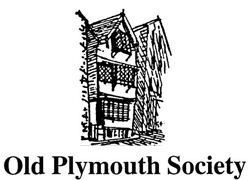by Nicholas J Casley
Published January 2013
Two westcountry quincentennial anniversaries have recently made the national news. There has been the march from Cornwall to London in the footsteps of Michael An Gove and his fellow Cornishmen, who were ultimately to be defeated by the king’s troops at Blackheath, just outside London, in June 1497; and secondly the inhabitants of Newfoundland have commemorated the rediscovery of their island by Europeans, led by Sebastian Cabot in his voyage in the Matthew from Bristol. Both events of 1497 affected Plymouth: although the Cornish marched through the centre of the county and did not approach the town, the rebellion brought a sense of unease to the borough, with inhabitants being sent to Exeter to spy tidings, and secret meetings being held with leading Cornishmen. The rediscovery of Newfoundland had a more long-term consequence, for within sixty years men from the town would be involved in exploiting the lucrative fishing grounds off the Newfoundland coast, an industry that would reach its height in the 17th century.
With the aid of Worth’s Calendar of Municipal Records I thought it might be interesting to look at events 500 years ago that were closer to home. There are unfortunately few records that are specific to this date. Various grants of land in Plymouth and Tavistock feature in the borough archives at this time, but the most fascinating material appears in the Receiver’s accounts. The Receiver was what would today be called the Treasurer, and the post was held in the 1497-8 year by Nicholas Trelan. The records show that the post, like the mayoralty, was often held by a different person each year, and indeed it was often the stepping stone into assuming the mayoralty itself. However, although Nicholas Trelan was also Receiver for two subsequent years (1501-2 and 15178), he never became Mayor.
The accounts, then, which ran from Michaelmas to Michaelmas (29th September), show payments for relatively mundane matters such as the shilling paid to William Stainer for painting the town’s coat-of-arms onto a book. Other similar civic expenditure included two shillings and eight pence being paid to Simon Arthur for making two cushions that had the town’s arms upon them. The cushions were intended for the mayor’s pew, but whether this pew was in newly remodelled St. Andrew’s church or in the Guildhall is not stated. The entry is followed by a reference to two goatskins costing ten pence; wool to fill them costing the same; and half a skin of gold foil costing six pence, making a total oftwo shillings and two pence. Can we assume from this that Simon Arthur’s labour amounted to sixpence worth?
More substantial expenditure was incurred in taxes. The 1497-8 accounts record thirty-one shillings and four pence being handed over to Ralph Gilbert and Richard Mewton for the Earl of Devon, Edward Courtenay, and a larger sum of forty shillings being paid to the King’s collectors. Henry VII’s need for money was quite urgent, and it was the demands for funds to help pay for his Scottish war that had sparked off the Cornish rebellion. However, Henry had the revolt of Perkin Warbeck to cope with too. Barely three months after the defeat of the Cornish at Blackheath, Warbeck landed near Land’s End and advanced his army eastwards. He claimed to be Richard, Duke of York, second son of Edward IV and the younger of the ‘Princes in the Tower,’ and therefore Richard IV, King of England. Like the Cornish rebellion of June, Warbeck marched up the backbone of Cornwall and Devon, ignoring Plymouth altogether. He attempted to storm Exeter, but his courage soon failed him as he moved further east into Somerset. The triumphant Henry VII himself came to Exeter in October and the mayor of Plymouth went there to see him.
The Mayor of Plymouth in this tumultuous year was Thomas Tresawell. His name appears quite often in the municipal records of this time, so we can construct the barest of biographies about him. When he was born and when he died are not known, and he either had no descendants or they were daughters, since no other Tresawells would seem to appear in Plymouth in subsequent years. He was clearly an important man in the town, for he was mayor four times, recorder of the borough, and MP. As an alderman – or ‘master’ – he went to London in 1486 to liaise with Robert Willoughby of Bere Ferrers, Baron Willoughby de Broke, Lord High Steward of Plymouth. He no doubt owned much property around the town, for he appears in the earliest surviving borough rental (1490-1) and an important grant of 1488 refers to a house, garden and well on the north side of the medieval Guildhall (wherever that was). His status, though, did not place him above the law, since in 1493 he was fined three pence for what would appear to be noxious fumes emanating from the slip next to his property, indicating that he also held land fronting the harbour.
His importance in Plymouth was sealed in 1497-8 itself when his house was the meeting place of the Lord Prince’s Council, the Lord Prince presumably being Arthur, Prince of Wales and, more importantly in this context, Duke of Cornwall, owner of the waters of Sutton Pool. We know this due to the corporation paying the princely sum of fifteen pence for wine at the meeting. Thomas Tresawell’s last appearance in Worth’s Calendar is in 1506-7, when he was mayor for the fourth and last time.
